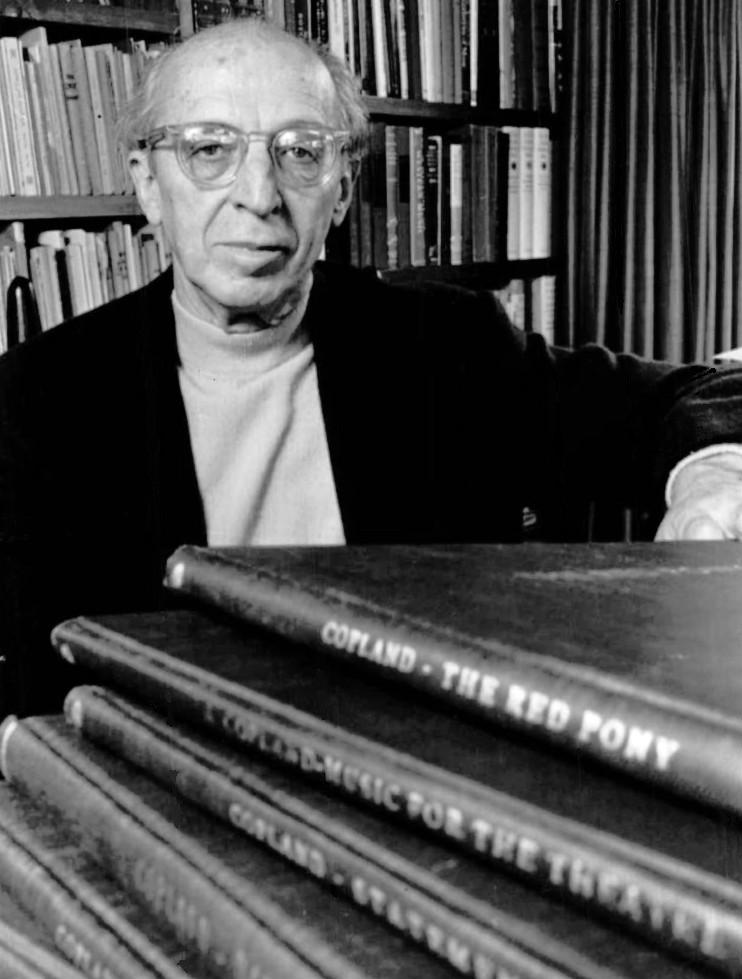
Aaron Copland
What's So Special About Copland?

Aaron Copland (1900-1990) stands as one of the iconic American composers of the 20th century. Born in Brooklyn, New York to Russian-Jewish immigrant parents, he grew up at the same time and in the same neighborhood as another iconic American composer, George Gershwin.
While growing up, Copland studied piano (becoming quite proficient) and music theory. His mother passed on a strong interest in opera, but much of his exposure to music came through weddings and bar mitzvahs at the local synagogue.
Like many aspiring composers of serious music in America, Copland sought to obtain the education he needed in Europe. He found a way to study at the Fontainbebleau School of Music just outside Paris. Although he began his studies on the piano, he soon switched to composition. There he came under the influence of a famed composition teacher Nadia Boulanger (1887-1979) who in the course of three years shaped Copland’s musical development. He was initially skeptical of studying with a woman, since women at that time were rare in the role of composers. But he later wrote: “This intellectual Amazon is not only professor at the Conservatoire, is not only familiar with all music from Bach to Stravinsky, but is prepared for anything worse in the way of dissonance. But make no mistake . . . a more charming womanly woman never lived.”
Copland also absorbed the influence of an extraordinary array of artists who had congregated in Paris in the 1920s: Ernest Hemingway, Gertrude Stein, Igor Stravinsky, Pablo Picasso, Jean-Paul Sartre, Marc Chagall, and many more luminaries of art, music, literature, and philosophy.
In 1925, Copland returned to New York where he gradually found patrons and supporters. Serge Koussevitsky, music director of the Boston Symphony and an advocate of new music, became his biggest booster, programming more of Copland’s works than any of Copland’s contemporaries.
Music was moving in such different directions in the 1920s, and Copland’s style shows that variety of influences. Jazz was popular, and the rise of dance bands (Big Bands) in the 1930s, such as those of Benny Goodman and Glenn Miller, brought jazz into greater popularity.
But Copland was looking to adopt the musical language around him. Copland had taken Boulanger’s directives and was searching for an authentic American sound, one that could be incorporated into serious art music—the “classical” world, if you will. And he also wanted to bring that music to a wider audience. Around 1935, he found that formula and a series of exciting works followed that exerted enormous influence on American music and cemented Copland’s place as one of the most significant 20th-century composers. He turned to a simpler, more traditional (diatonic) harmonic language. He incorporated elements of folk music. His works were programmatic: they told stories or painted pictures that made them more accessible to the general public. His pieces had complex rhythms—something Copland thought essential to an American sound—and yet were accessible to the listener. And they covered a wide range of emotions, from the ethereal and sublime to movements of high energy that really packed a wallop.
In the materials that follow, we will explore some of Copland’s early and later works, but we will focus on the four core works of this period of 1935-1942: El Salón México, Billy the Kid, Rodeo, and Appalachian Spring.
Personal Data
Dates: 1900-1990
Born: Brooklyn, New York
Residence: New York
Timelines
(You must be logged into the Circle of Scholars to view the rest of this page.)
